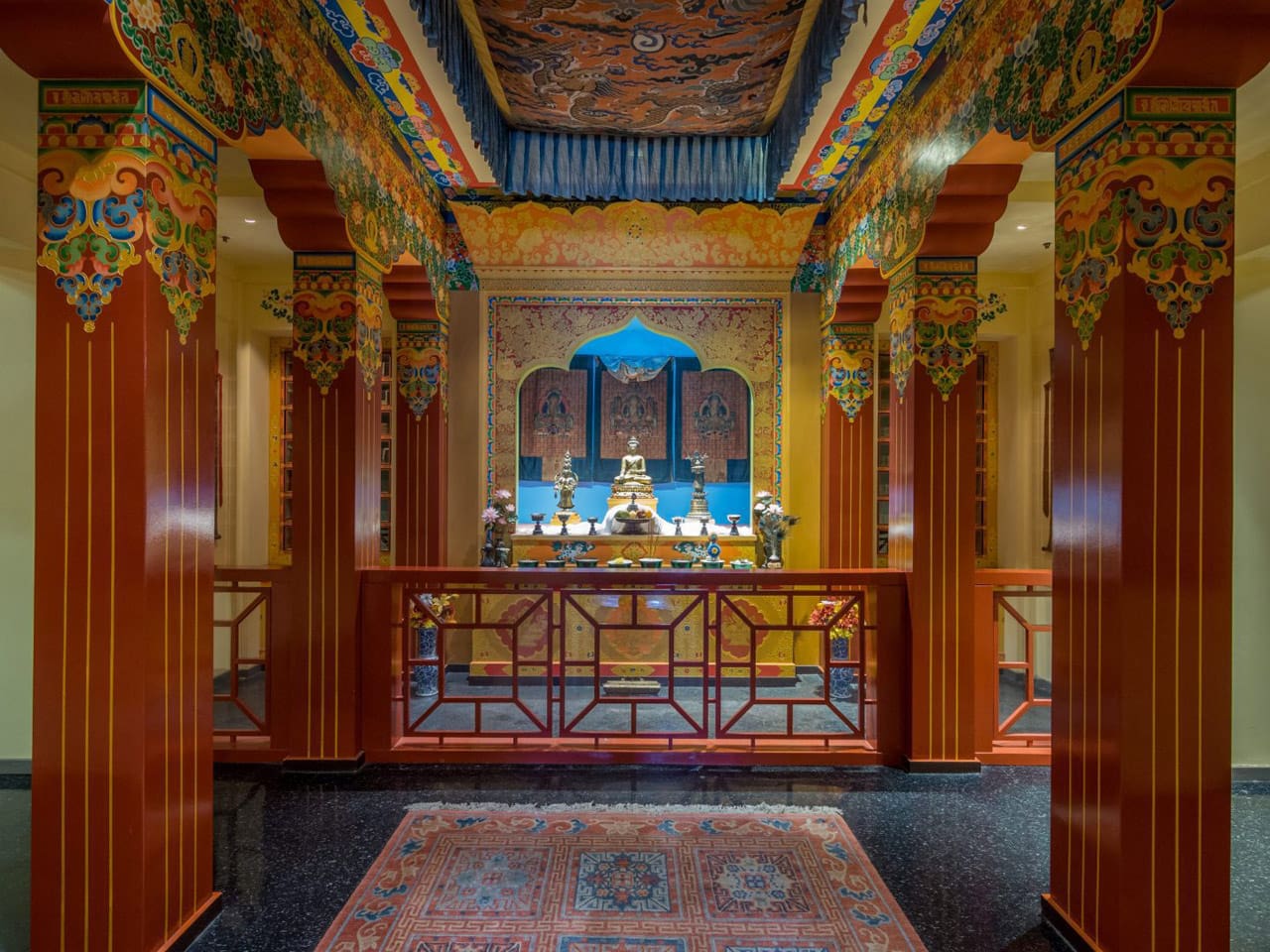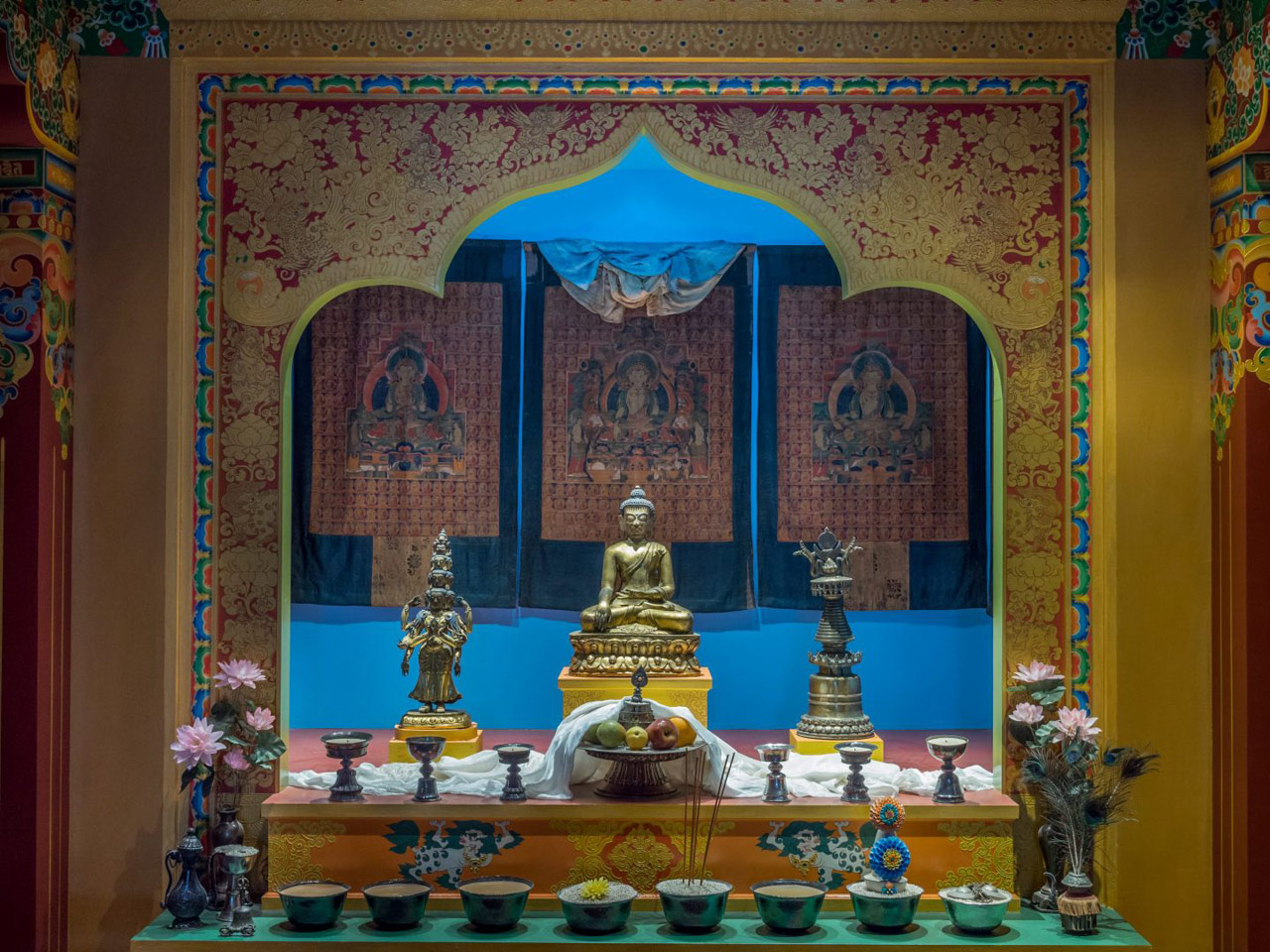A Tibetan Buddhist altar is traditionally constructed as a sacred space to house images of the Buddha and his teachings. The altar serves as a focus of Buddhist religious ritual and as a place for profound contemplation. Offerings are placed on the altar as an expression of the practitioner’s devotion to the principle of enlightenment.
The Museum’s Tibetan Buddhist altar was created as part of a special project, Tibet, the Living Tradition (1988-91). Phuntsok Dorje, a Tibetan artist trained at Rumtek Monastery in Sikkim, was artist-in-residence in 1989 and 1990. Working with the Museum staff and a team of Tibetan consultants and scholars, Mr. Dorje designed and created the altar. This replaced the old 1935 altar, which had been constructed by American artists working on special assignment to the Museum. In 1999, Mr. Dorje returned to paint the entry to the altar as part of the reinstallation of the Museum’s, From the Sacred Realm: Treasures of Tibetan Art in the Collection of The Newark Museum of Art.


